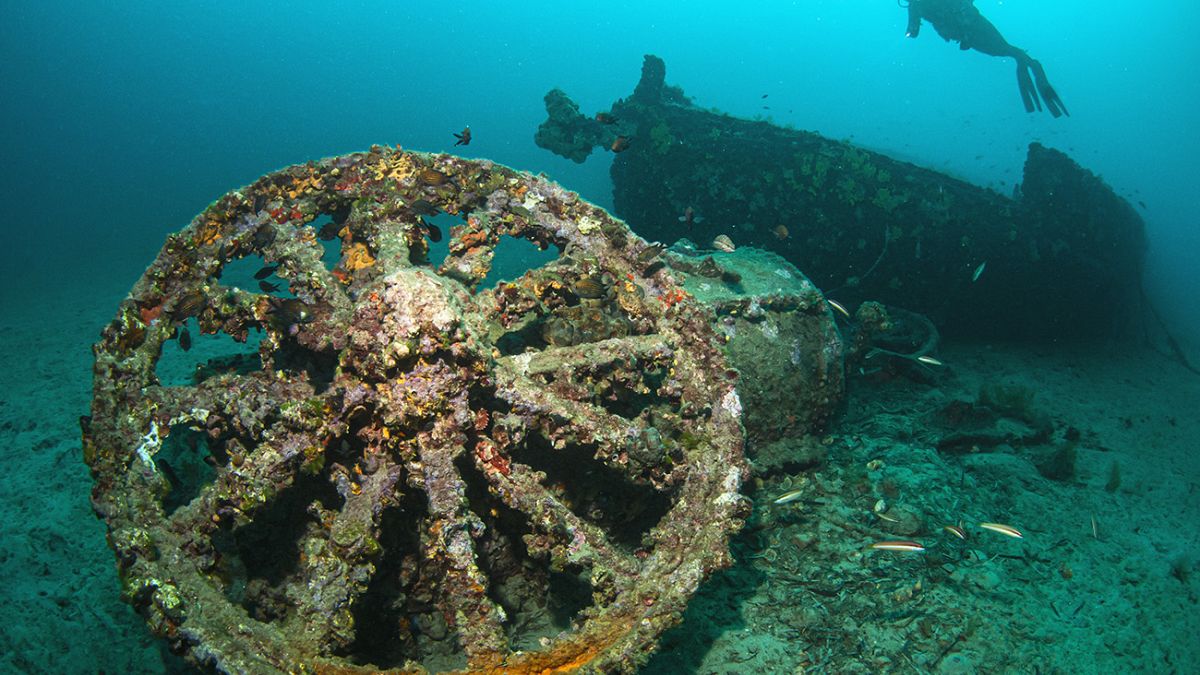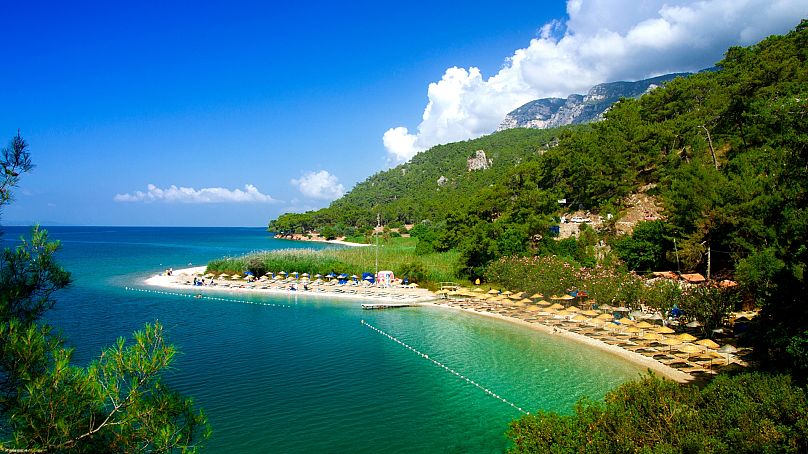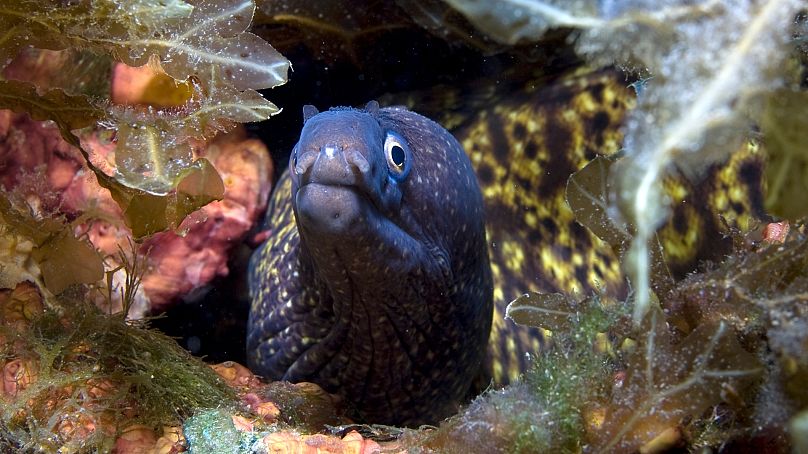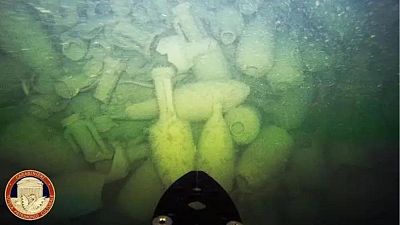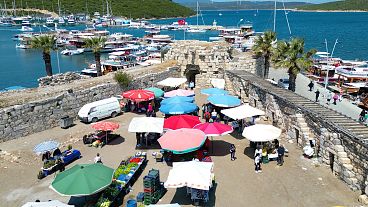From historical shipwrecks to reefs teeming with wildlife, Türkiye’s treasures of the deep make it a scuba diver’s paradise.
From shipwrecks to sunken cities, it's Türkiye's treasures of the deep that make the country's coastline the perfect underwater playground for divers.
Türkiye sits at the intersection of ancient cultures and maritime trade routes, all of which have left their mark underwater, and when you add hundreds of dive sites and professional diving schools along every coastline, a rich underwater ecosystem of marine life and coral reefs, plus crystal clear waters and warm temperatures, divers are spoiled for choice.
Under the umbrella of the Inventory of Shipwrecks project, numerous studies are ongoing to preserve Türkiye's underwater cultural assets and open up shipwrecks to diving tourism. Çanakkale’s Gallipoli Historical Underwater Park is one such route, where divers can explore historical wrecks like the WWI British minesweeper HMS Lundy or the 19th century British steam passenger ship SS Milo.
Ali Eyüpoğlu, a physical education teacher and diving instructor, has a boat and a diving centre in Çanakkale. For him, the appeal of Türkiye for scuba divers is clear: "The coastline is abundant and has played host to various civilizations. The physical structures of our underwater archaeology are good, and Türkiye is among the leading countries in the world both in the academic field and in terms of underwater excavations and research".
Flying fish
Eyüpoğlu says Çanakkale, where the diving season lasts from May to December, is a prime example of what Türkiye has to offer. “Çanakkale has hosted ancient civilizations in its history pages. Today, it is the centre of attention for divers who want to see the shipwrecks from the First World War. It is the only region in the world that has an underwater national park.”
If a relaxing dive rather than an educational one is more your bag, Fethiye’s Aquarium Bay lives up to its name, as it's famed for the diversity of its marine life – divers will come face to face with octopuses and Mediterranean morays. It's a good spot for both beginner and experienced divers too.
Or head for the warm waters of Datça. Pristine and well-preserved, it is considered one of the most beautiful diving spots in the country, as well as one of the most biodiverse – and with some of the friendliest locals: dolphins.
Meanwhile at Gökova – which translates as “sky blue” – you might make friends with Mediterranean monk seals, or a 10-kilo tuna... the waters here are famously blue, and well known to scuba divers around the world.
Big Reef at Bodrum on the Aegean coast is teeming with aquatic life, including coral reefs, starfish, sea urchins, sea sponges, octopuses and various schools of vibrant fish. And it has the crystal clear waters to show them off – especially if you head out early in the morning.
The reef is home to 20 diving sites with a depth of up to 30 metres, with the reefs sitting just outside the harbour. Meanwhile, on the same coast at Kuşadası there are no currents and excellent clarity, allowing even beginners to dive deep to take a look at the dramatic underwater rock formations.
For a more adventurous and challenging dive, Uçan Balık, Kas will appeal to those with experience. Taking its name – which translates as “flying fish” – from the wreck of an Italian torpedo plane that sits on its sea bed, it also pays homage to the predatory fish you'll find there, including dentexes, groupers, barracudas and amberjacks.
Reefs and ruins
Marmaris, on the other hand, is a crowd-pleaser, suitable for all levels of diving experience and with more than 50 dive spots, containing reefs, wrecks and ancient ruins. Kadırga Bay stands out in particular for its excellent visibility.
At a depth of 15 metres, divers can get up close to the remains of a Hellenistic ship, as well as a few moray eels. Inexperienced divers will enjoy the calm waters of Kalkan in Kalamar Bay, although calm doesn't mean quiet, since the clear, sparkling waters are teeming with barracudas, octopuses and even sea turtles.
The Kaş underwater canyon is regularly listed as one of the top diving spots in the world. Sitting at the heart of the Turkish Riviera, it encompasses 21 diving spots. Uçanbalık is unmissable amongst them (although more suited to experienced divers with a depth of between 55 and 71 metres) for the poignant sight of the wreck of a Savoia-Marchetti SM79 Italian bomber that was shot down as it bombed Meis during the Second World War.
Two other shipwrecks found near Kaş date back considerably further: the Cape Gelidonya and the Uluburun wrecks are among the oldest in the Mediterranean, and what remains of them is now on display on dry land at the Bodrum Museum of Underwater Archaeology.

